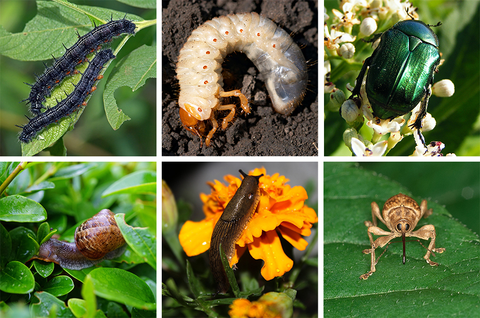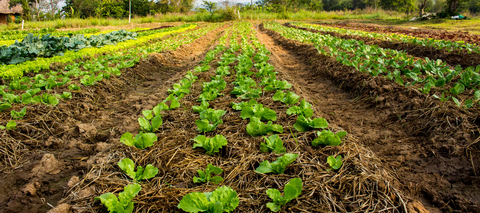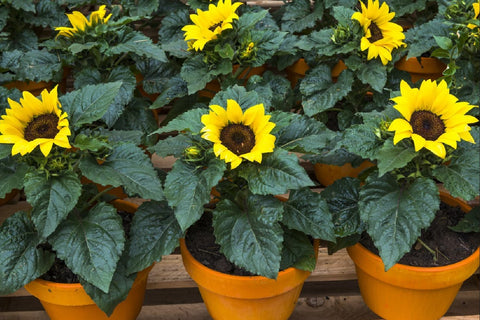Gardening is a beautiful endeavor that allows us to cultivate nature's wonders right at home. However, every gardener encounters challenges in the form of pests and diseases that can harm our plants. In this blog post, we will delve into the world of troubleshooting common garden pests and plant diseases, offering insights and solutions to help you safeguard your garden's health and vitality. With our guidance, you'll learn to identify, manage, and prevent these challenges, ensuring your garden flourishes.The following content also has some reference value for raised garden beds.

Understanding Garden Pests and Plant Diseases
Common Garden Pests
- Aphids
Aphids are tiny, sap-sucking insects that cluster on plant stems and leaves, causing curling, wilting, and yellowing.
- Slugs and Snails
These slimy creatures feast on plant leaves and stems, leaving irregular holes and damage in their wake.
- Caterpillars
Caterpillars are voracious eaters that can quickly defoliate plants. Their presence is indicated by chewed leaves and foliage.
- Whiteflies
Whiteflies are small, winged insects that suck sap from plants. Their infestations can lead to stunted growth and the spread of viruses.
Common Plant Diseases
- Powdery Mildew
Powdery mildew appears as a white, powdery substance on leaves, affecting their photosynthesis and causing wilting.
- Fungal Rot
Fungal rot attacks plant tissues, causing them to decay. Symptoms include discolored, mushy, and foul-smelling plant parts.
- Bacterial Blight
Bacterial blight results in wilting, browning, and death of plant tissue. Bacteria can enter plants through wounds or natural openings.
- Root Rot
Root rot is caused by waterlogged soil, leading to decay of the plant's root system, yellowing leaves, and overall decline.

Solutions for Common Garden Pests and Plant Diseases
Integrated Pest Management (IPM)
IPM is an eco-friendly approach that combines various strategies to manage pests effectively.
- Cultural Practices
- Plant diversity: Mixed plantings deter pests by confusing them and providing natural predators with varied food sources.
- Proper spacing: Adequate spacing allows for good air circulation, reducing the risk of fungal diseases.
- Mechanical Control
- Handpicking: Physically remove pests like caterpillars and slugs from plants.
- Barriers: Use barriers like row covers to protect plants from flying insects like aphids and whiteflies.
Organic Pest Control
- Neem Oil
Neem oil is a natural insecticide that disrupts pests' growth and reproduction, effectively controlling their populations.
- Beneficial Insects
Introduce beneficial insects like ladybugs, lacewings, and parasitic wasps that prey on garden pests.
- Diatomaceous Earth
Diatomaceous earth is a natural powder that damages insects' exoskeletons, causing them to dehydrate and die.
Preventing and Managing Plant Diseases
- Good Hygiene
- Clean tools: Regularly sanitize gardening tools to prevent the spread of diseases.
- Prune properly: Remove infected plant parts promptly to prevent disease spread.
- Proper Watering
- Water at the base: Avoid wetting leaves, which can encourage fungal growth.
- Water early: Watering in the morning allows leaves to dry quickly, reducing the risk of disease.
- Fungicides and Biofungicides
- Copper-based fungicides: These can prevent and manage fungal diseases.
- Biofungicides: These are natural substances that suppress diseases without harming beneficial organisms.

Dealing with Root Rot
- Improving Drainage
- Amend soil: Add organic matter to improve soil structure and drainage.
- Raised beds: Planting in raised beds helps prevent waterlogging.
- Select Resistant Plants
Choose plant varieties that are resistant to root rot pathogens, reducing the risk of infection.
Conclusion
While gardening may present challenges in the form of pests and diseases, it's essential to approach these issues with knowledge, patience, and determination. By understanding the common pests and diseases that affect plants and implementing a combination of integrated pest management strategies, organic controls, and preventive measures, you can create a thriving garden that flourishes with health and vitality. Gardening is a journey of nurturing nature, and with our guidance, you're equipped to navigate through obstacles and create a garden that's a testament to your care and dedication.









